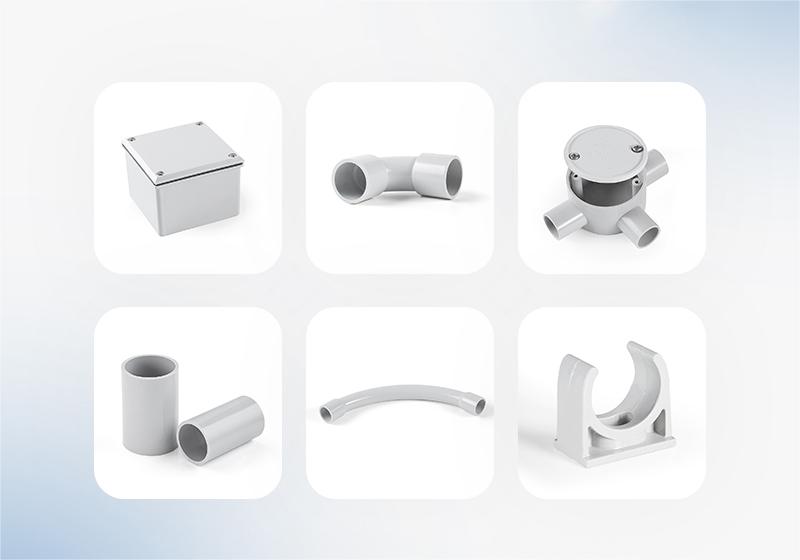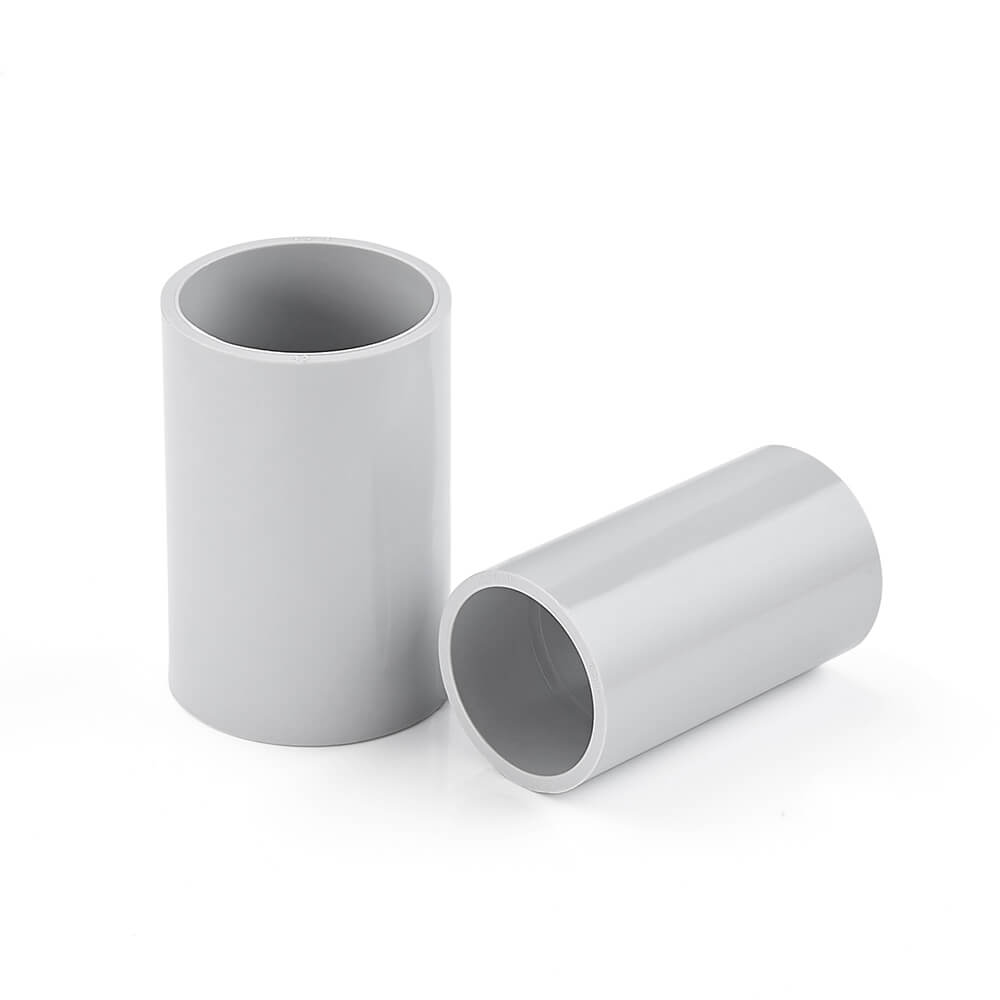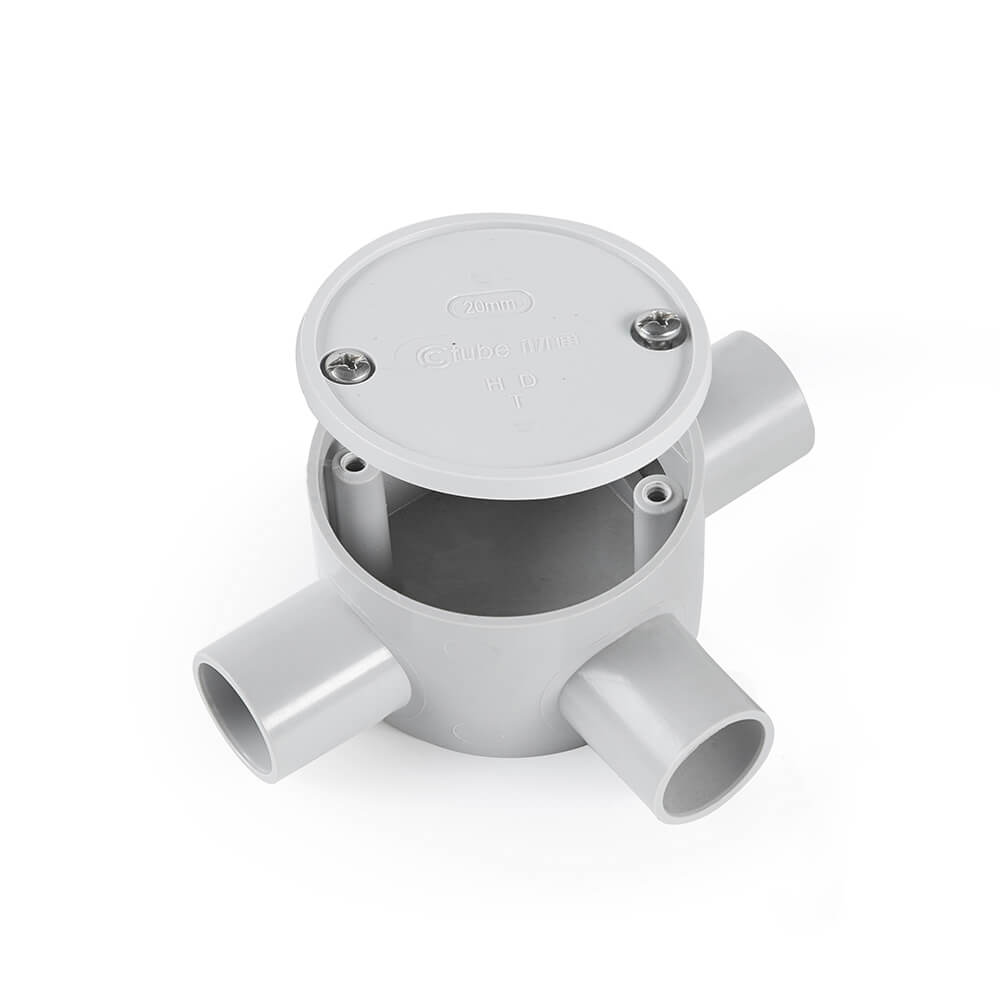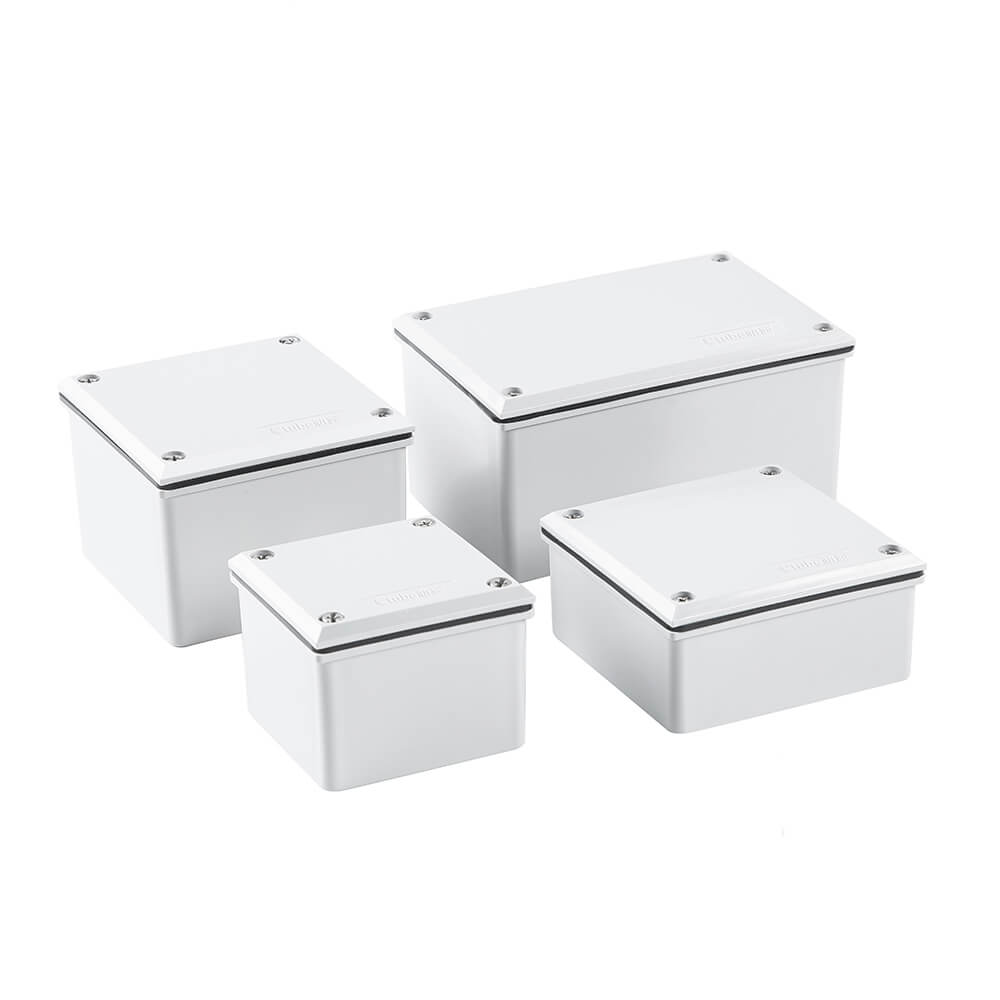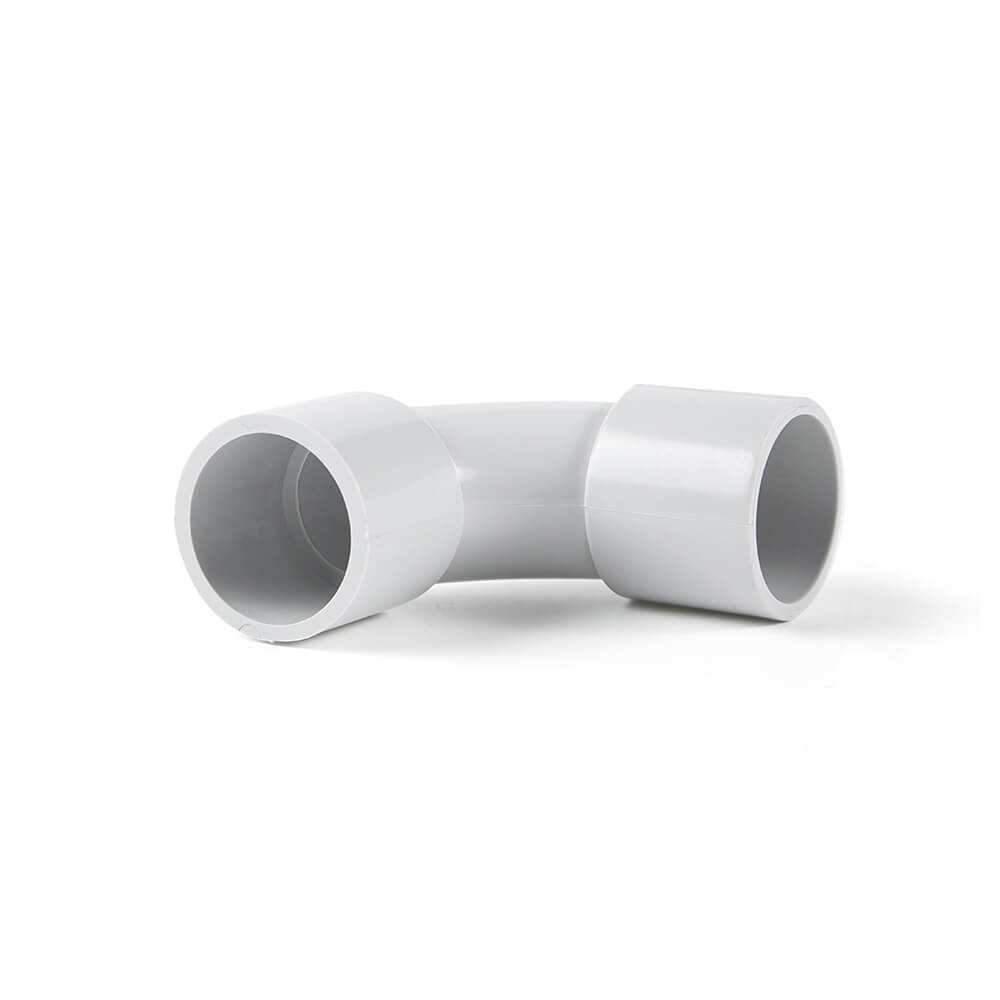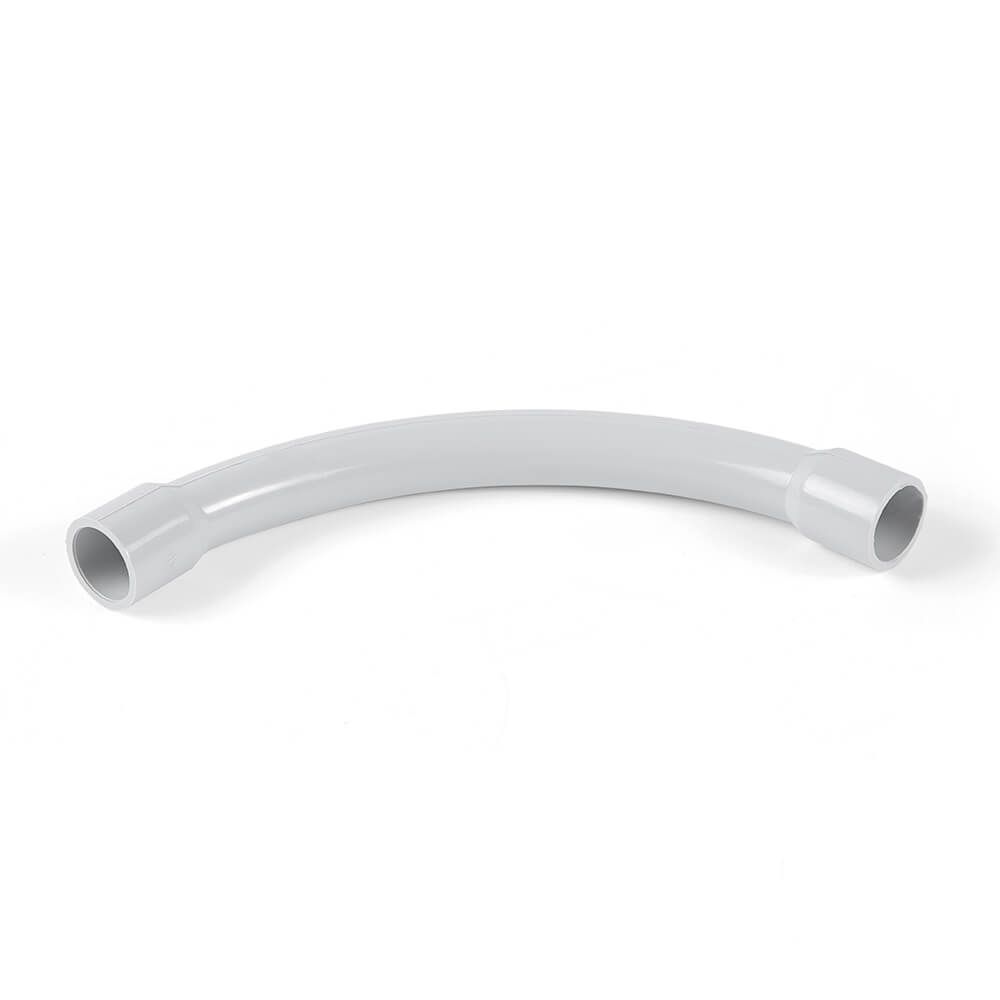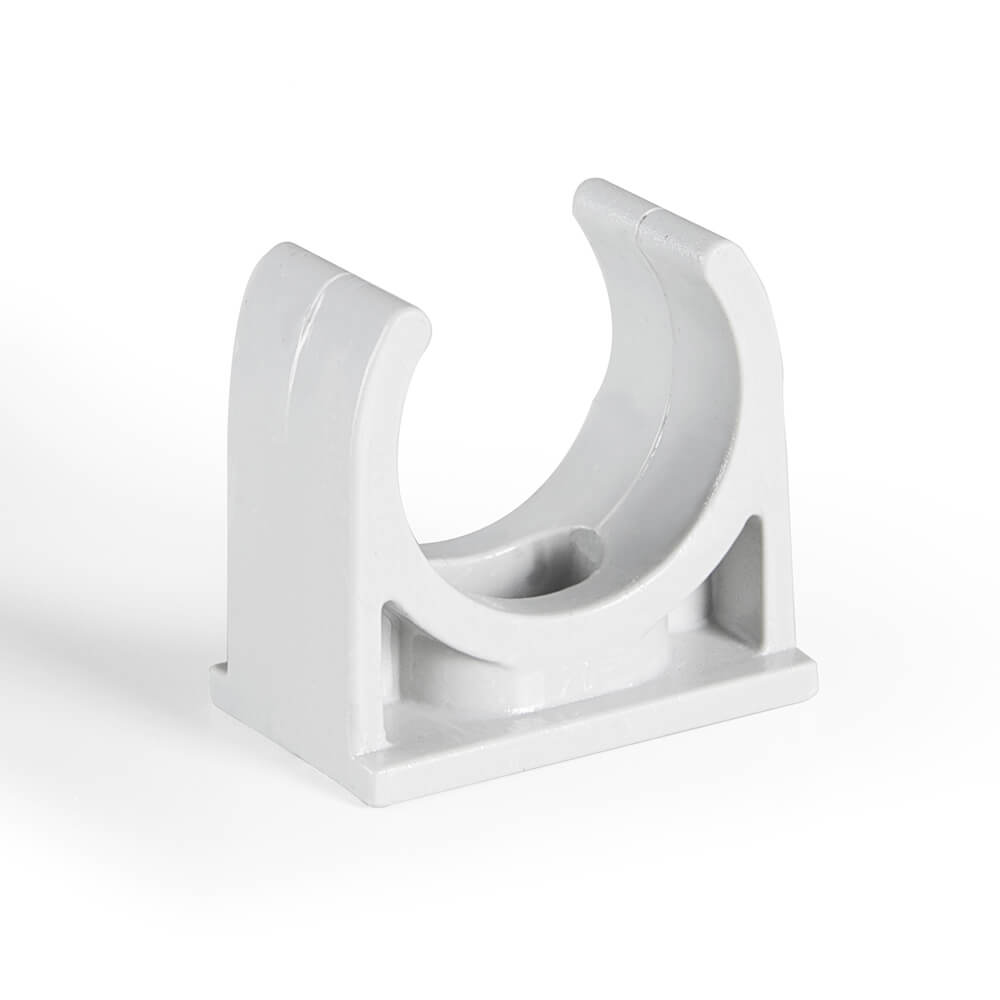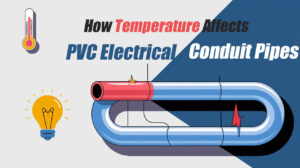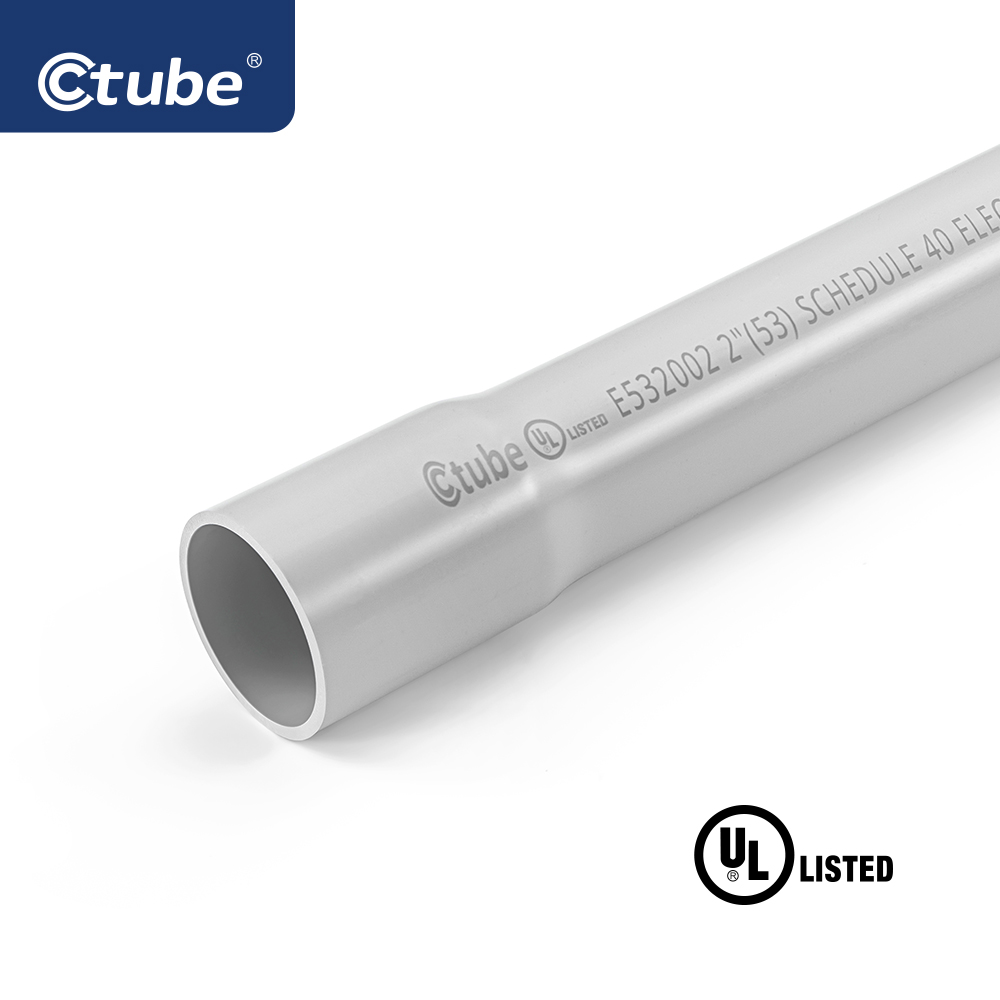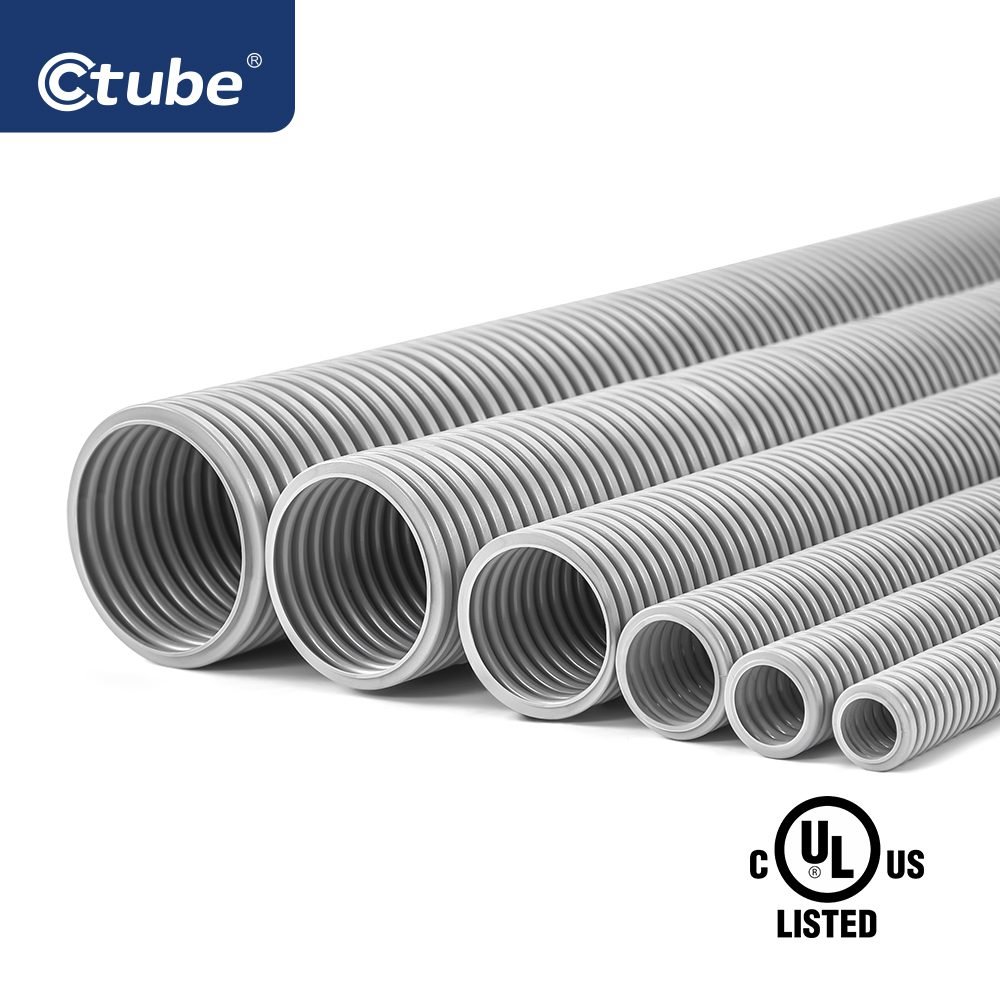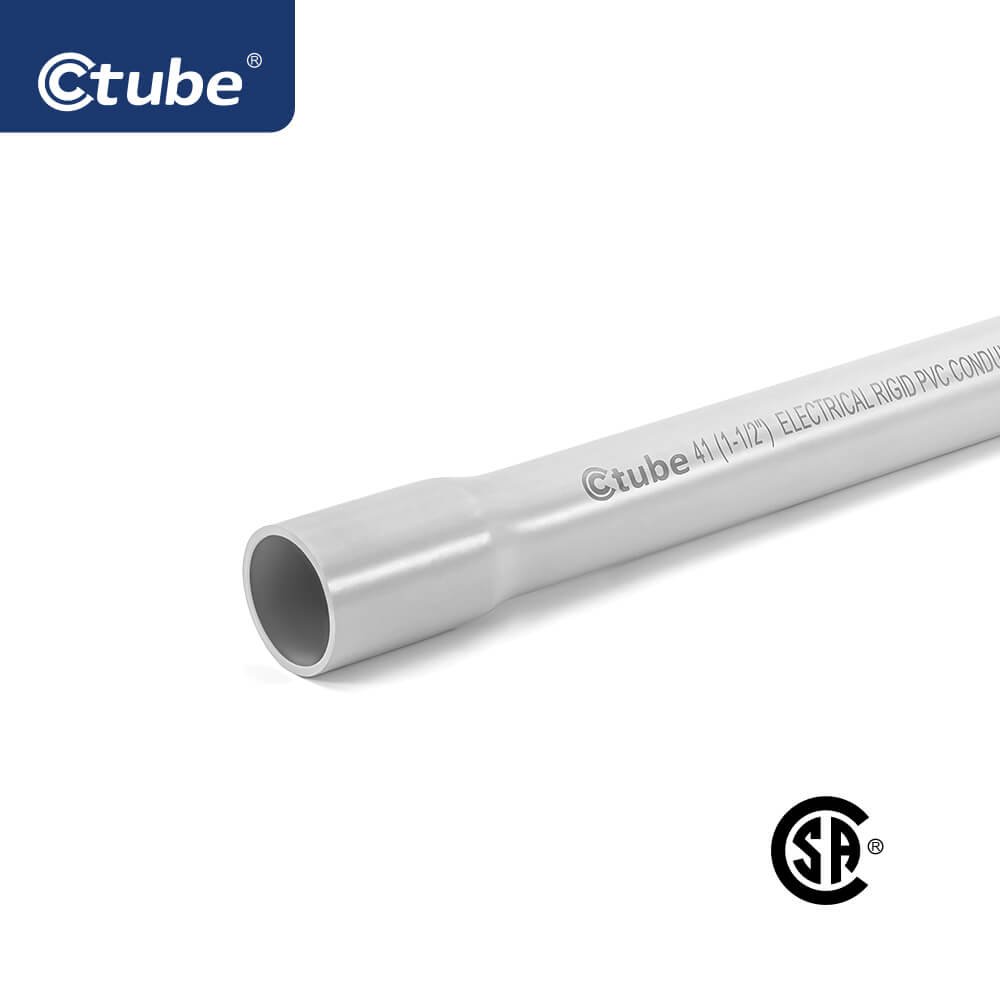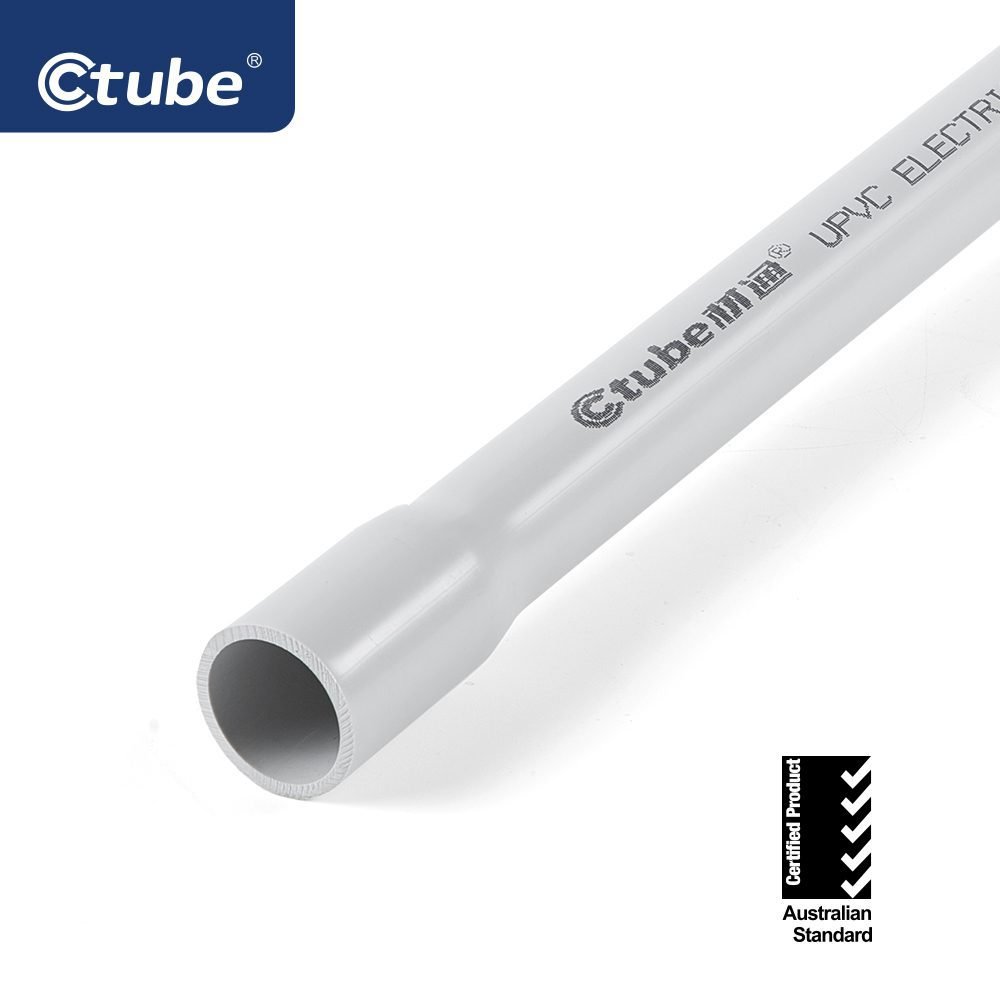Tabla de contenido
PalancaAccesorios para conductos eléctricos Son componentes esenciales en los sistemas de cableado, ya que brindan conectividad, protección y organización a los conductos eléctricos. En este artículo, exploraremos la innovación en los accesorios para conductos de PVC que mejoran la eficiencia y agilizan las instalaciones.
1. ¿Qué son los accesorios para conductos eléctricos de PVC?
Los accesorios para conductos eléctricos son componentes especializados que se utilizan para conectar, terminar y asegurar conductos eléctricos. Garantizan el tendido y la protección adecuados de los cables y alambres eléctricos, y los protegen de daños y factores ambientales.
2. ¿Por qué son importantes los accesorios para conductos de PVC?
Los accesorios para conductos eléctricos desempeñan un papel fundamental en la optimización de la funcionalidad y la fiabilidad de los sistemas de cableado. Proporcionan soporte, organización y protección adicionales, mejorando la eficiencia y la seguridad generales de las instalaciones eléctricas.
3. ¿Cómo elegir los accesorios para conductos de PVC?
La selección de los accesorios de conductos de PVC adecuados es fundamental para garantizar la compatibilidad, el rendimiento y la seguridad en los proyectos de cableado. Entre los factores que se deben tener en cuenta se incluyen el tamaño del conducto, el entorno de aplicación y los requisitos específicos del proyecto. Es esencial elegir accesorios que cumplan con los estándares y las regulaciones de la industria.
4. ¿Qué tipos de accesorios para conductos de PVC están disponibles?
Acoplamiento, caja de conexiones, caja adaptable, codo, curva de barrido, clip de conducto, adaptador de tornillo para conducto corrugado, T recta para instalación, etc. A continuación, presentamos los primeros seis accesorios.
a. Acoplamiento: Une dos secciones de conducto en línea recta.
Los acoplamientos son la columna vertebral de cualquier sistema de conductos y facilitan la conexión perfecta de dos secciones de conductos para crear una vía continua y confiable para el cableado eléctrico. En el ámbito de los accesorios para conductos de PVC, estos componentes esenciales están diseñados con características innovadoras para mejorar la eficiencia de la instalación y el rendimiento a largo plazo.
El avance clave en los acoplamientos de PVC es la integración de diseños a presión, que revolucionan el proceso de instalación al eliminar la necesidad de herramientas complicadas. Esta característica innovadora permite a los electricistas simplemente encajar el acoplamiento en su lugar, lo que reduce significativamente el tiempo de instalación y los costos de mano de obra. Además, los acoplamientos a presión garantizan un ajuste seguro y firme, lo que minimiza el riesgo de desconexión o movimiento una vez instalados.
Además de la facilidad de instalación, los acoplamientos de PVC suelen estar fabricados con materiales resistentes a la corrosión, como PVC de alta calidad o acero revestido de PVC, para soportar los rigores de los entornos más hostiles. Esta durabilidad garantiza que el acoplamiento mantenga su integridad estructural a lo largo del tiempo, incluso en condiciones corrosivas o propensas a la corrosión, como entornos industriales o al aire libre. Como resultado, los acoplamientos de PVC ofrecen un rendimiento y una fiabilidad duraderos, lo que minimiza la necesidad de reemplazos frecuentes y reduce los costes de mantenimiento.
b. Caja de conexiones: ofrece flexibilidad en la terminación de conductos y puntos de conexión.
Las cajas de conexiones representan una solución versátil en los sistemas de conductos eléctricos, ya que ofrecen flexibilidad en los puntos de conexión y terminación de los conductos. Estas cajas están diseñadas para adaptarse a diversos escenarios de instalación, lo que brinda a los electricistas la libertad de personalizar los diseños de los conductos y adaptarse a los requisitos específicos del proyecto.
Una de las principales ventajas de las cajas de conexiones es su capacidad para alojar múltiples puntos de terminación de conductos dentro de un solo gabinete. A diferencia de las cajas de conexiones tradicionales, que suelen tener puntos de entrada y salida fijos, las cajas de conexiones ahora cuentan con orificios extraíbles o áreas premarcadas que se pueden perforar o modificar fácilmente para crear puntos de entrada o salida adicionales para conductos. Esta flexibilidad permite a los electricistas adaptar la caja para que se ajuste al diseño específico del sistema de conductos, lo que minimiza la necesidad de múltiples cajas y agiliza el proceso de instalación.
Además, algunas cajas de conexiones pueden tener diseños expandibles que se pueden extender o modificar para acomodar cableado o dispositivos adicionales, lo que brinda escalabilidad y protección para el futuro del sistema eléctrico. Las cajas de conexiones de PVC de Ctube ofrecen opciones poco profundas y profundas con configuraciones de 1 a 4 vías y cuentan con orificios de 20 mm y 25 mm.
c. Caja adaptable: Proporciona un recinto protector para empalmes y conexiones de cables.
Las cajas adaptables son componentes esenciales en las instalaciones eléctricas, ya que sirven como recintos protectores para empalmes y conexiones de cables. Estas cajas desempeñan un papel crucial en la protección de las conexiones eléctricas frente a peligros ambientales, daños mecánicos y manipulaciones, garantizando la integridad y seguridad de todo el sistema de cableado.
Una de las funciones clave de unadaptable El propósito de las cajas de conexiones es proporcionar un espacio cerrado y seguro para empalmes, terminaciones y conexiones de cables. Al alojar estos componentes dentro de un gabinete protector, las cajas de conexiones evitan la exposición a la humedad, el polvo, los residuos y otros elementos externos que podrían comprometer la integridad de las conexiones eléctricas. Esta protección es particularmente vital en entornos exteriores o hostiles donde la exposición a los elementos es una preocupación.
Además, las cajas adaptables ayudan a organizar y gestionar la compleja red de cables y alambres dentro de un sistema eléctrico. Al contener y consolidar múltiples cables y conexiones en un solo gabinete, las cajas de conexiones minimizan el desorden y la confusión, lo que facilita a los electricistas la resolución de problemas y el mantenimiento del sistema. Además, el cableado organizado dentro de cajas adaptables reduce el riesgo de contacto accidental o daño, lo que mejora la seguridad general.
Las características innovadoras que se encuentran en las cajas adaptables modernas mejoran aún más su funcionalidad y facilidad de uso. Por ejemplo, algunas cajas adaptables cuentan con tapas o paneles de acceso extraíbles, lo que permite una fácil inspección, mantenimiento y modificación de las conexiones eléctricas sin necesidad de herramientas especializadas. Otras pueden incorporar mecanismos de alivio de tensión integrados para evitar daños en los cables y garantizar la confiabilidad a largo plazo.
Además, las cajas adaptables vienen en varios tamaños, formas y materiales para adaptarse a diferentes requisitos de instalación y condiciones ambientales. Ya sea una pequeña caja adaptable para aplicaciones residenciales o una caja resistente y resistente a la intemperie para entornos industriales, existe una amplia gama de opciones disponibles para satisfacer las necesidades específicas de cada proyecto.
d. Codo: facilita los cambios de dirección del conducto en ángulos específicos.
Los codos son componentes fundamentales en los sistemas de conductos eléctricos, ya que facilitan los cambios de dirección de los conductos en ángulos específicos. Estos accesorios esenciales desempeñan un papel fundamental en el tendido de conductos eléctricos alrededor de obstáculos, esquinas y otros elementos estructurales, lo que garantiza la alineación óptima de los conductos y la integridad del sistema.
Una de las principales funciones de los codos es permitir un tendido de conductos fluido y eficiente en espacios reducidos o diseños complejos. Al permitir que el conducto cambie de dirección en ángulos específicos, los codos ayudan a los electricistas a sortear obstáculos como paredes, vigas y otras obstrucciones sin comprometer la integridad del sistema de conductos. Esta flexibilidad en el tendido de conductos garantiza que el cableado eléctrico se pueda instalar de forma segura y eficiente en cualquier entorno, desde edificios residenciales hasta instalaciones industriales.
Además de facilitar los cambios de dirección de los conductos, los codos también ayudan a mantener los radios de curvatura adecuados en el sistema de conductos. Los radios de curvatura se refieren al radio de curvatura mínimo permitido para los conductos eléctricos, lo que garantiza que los cables y alambres dentro del conducto no estén sujetos a una tensión o daño excesivos. Los codos con guías o marcas de radio incorporadas ayudan a los electricistas a lograr curvas precisas que cumplen con los estándares y regulaciones de la industria, lo que minimiza el riesgo de daños en los cables y garantiza la confiabilidad a largo plazo.
Además, los codos vienen en varios ángulos y configuraciones para adaptarse a diferentes requisitos de instalación y limitaciones de espacio. Los ángulos más comunes incluyen 90 grados, 45 grados y 30 grados, lo que permite a los electricistas hacer giros y curvas precisas según sea necesario. Además, los codos pueden presentar diseños giratorios que permiten un posicionamiento ajustable, lo que permite a los electricistas ajustar la alineación de los conductos y optimizar la eficiencia del tendido.
e. Curva de barrido: permite curvas graduales para enrutar conductos alrededor de esquinas u obstáculos.
Los codos de barrido son componentes esenciales en los sistemas de conductos eléctricos y ofrecen una solución para enrutar conductos alrededor de esquinas u obstáculos con curvas graduales. A diferencia de los codos tradicionales, que crean ángulos agudos en el enrutamiento de conductos, los codos de barrido brindan una curva más gradual, lo que reduce el riesgo de daños en los cables y garantiza una alineación óptima de los conductos y la integridad del sistema.
Una de las principales ventajas de las curvas de barrido es su capacidad para facilitar el tendido de conductos de forma suave y gradual, en particular en espacios reducidos o áreas con espacio libre limitado. Al permitir que los conductos se doblen gradualmente alrededor de esquinas u obstáculos, las curvas de barrido minimizan la tensión y el estrés en los cables eléctricos en el interior, lo que evita que se doblen, estiren o dañen. Esta acción de curvatura gradual garantiza que los cables y alambres se puedan tender de forma segura y eficiente sin comprometer su rendimiento ni su longevidad.
Además, las curvas de barrido ayudan a mantener los radios de curvatura adecuados en el sistema de conductos, lo que garantiza el cumplimiento de las normas y regulaciones de la industria. Los radios de curvatura se refieren al radio de curvatura mínimo permitido para conductos eléctricos, y mantener estos radios es esencial para evitar daños en los cables y garantizar una transmisión óptima de la señal. Las curvas de barrido con indicadores de ángulo premarcados o guías de radio ayudan a los electricistas a lograr curvas precisas que cumplen con los requisitos de la industria, lo que reduce el riesgo de incumplimiento y garantiza la confiabilidad a largo plazo del sistema eléctrico.
Además de sus beneficios funcionales, las curvas de barrido también ofrecen versatilidad en el tendido de conductos, lo que permite a los electricistas navegar por instalaciones complejas con facilidad. Las curvas de barrido vienen en varios ángulos y configuraciones para adaptarse a diferentes requisitos de instalación y limitaciones de espacio, lo que proporciona flexibilidad y adaptabilidad en el tendido de conductos. Ya sea una curva suave alrededor de una esquina o una curva más sustancial para sortear un obstáculo, las curvas de barrido ofrecen una solución para prácticamente cualquier escenario de tendido.
f. Clip de conducto: fija el conducto a las superficies para brindar soporte y estabilidad.
Las abrazaderas para conductos son accesorios esenciales en los sistemas de conductos eléctricos, diseñados para fijar los conductos a superficies para brindarles soporte y estabilidad. Estas abrazaderas desempeñan un papel fundamental para garantizar que los conductos permanezcan firmemente en su lugar, evitando que se comben, se muevan o se desplacen, lo que podría comprometer la integridad y la seguridad de todo el sistema de cableado.
Una de las principales funciones de las abrazaderas para conductos es proporcionar puntos de sujeción seguros para conductos en superficies como paredes, techos o pisos. Al asegurar los conductos en su lugar, las abrazaderas para conductos ayudan a distribuir el peso del conducto y cualquier cableado contenido de manera uniforme en toda la superficie de montaje, lo que minimiza la tensión y el esfuerzo en el conducto y garantiza la estabilidad a largo plazo. Esto es particularmente importante en entornos donde puede haber vibración, movimiento u otras fuerzas externas, ya que las abrazaderas para conductos ayudan a evitar daños o desconexiones del conducto.
Además, las abrazaderas para conductos ofrecen versatilidad en la instalación, lo que permite a los electricistas fijar de forma segura los conductos a una amplia gama de superficies y configuraciones. Ya sea una pared vertical, un techo horizontal o una viga elevada, las abrazaderas para conductos vienen en varios tamaños y diseños para adaptarse a diferentes requisitos de montaje y materiales de superficie. Algunas abrazaderas pueden tener correas o soportes ajustables para adaptarse a conductos de distintos tamaños, lo que proporciona flexibilidad y facilidad de instalación.
Como primer ministro fabricante y proveedor De tuberías de PVC de plástico, ofrecemos una amplia gama de productos eléctricos de PVC, incluidos accesorios y conexiones. Nuestro compromiso de satisfacer las demandas del mercado se refleja en el desarrollo de diversas normas adaptadas a necesidades específicas. Por ejemplo, ofrecemos conductos y conexiones estándar australianos diseñados específicamente para el mercado australiano, así como conductos y conexiones libres de halógenos y con baja emisión de humo adecuados para una amplia gama de mercados globales.
Con una década de experiencia en la fabricación de accesorios y conexiones, Ctube se ha ganado la reputación de ofrecer productos eléctricos de PVC de la más alta calidad. Nuestros accesorios de PVC son reconocidos por su fácil instalación y sus propiedades excepcionales, como la no conductividad, la alta resistencia al impacto y la resistencia a la tracción.
Además, nuestros productos cuentan con certificaciones de la industria y son resistentes a diversos productos químicos. Desde cajas adaptables hasta cajas de conexiones, codos y curvas, acoplamientos y correas y clips para conductos, nuestra línea de productos está diseñada meticulosamente para cumplir con los estándares profesionales y, al mismo tiempo, garantizar la confiabilidad y la durabilidad.
Si desea conductos y accesorios de PVC confiables que cumplan con los requisitos de la industria, contáctenos hoy para obtener más información y realizar su pedido al por mayor.

